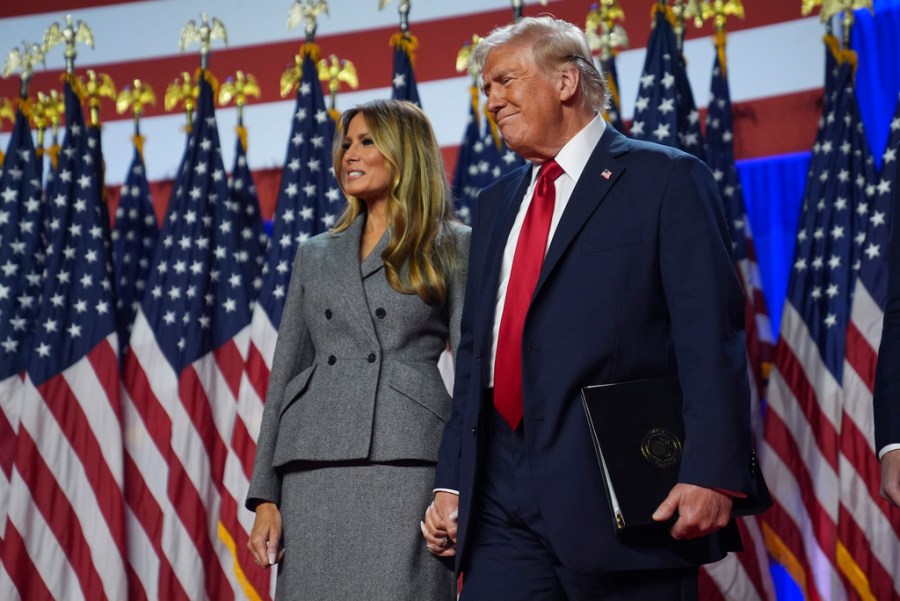
In an election that will be studied and debated for years to come, Donald Trump’s return to the White House marks not only his resurgence but also a profound shift in American politics.
This was no fluke; it was a clear, if unsettling, choice by the American people — a choice that challenges many assumptions about the political landscape and signals a seismic realignment.
Despite President Biden’s experience, he failed to connect with the public on issues like inflation, living costs, immigration and institutional disillusionment. Many viewed him as out of touch and clinging to the past while the country moved on. His administration’s perceived lack of urgency on these concerns left an opening for Trump’s populist message.
Biden missed the moment to step aside, which could have allowed a new generation to mount a robust response to Trump. Instead, Democrats’ loyalty to him clouded their judgment. When Kamala Harris stepped forward, she was tied to an administration that had worn thin with the public, leaving her with the impossible task of rejuvenating a weary base while countering Trump’s energized movement.
Democrats underestimated Trump’s appeal by refusing to confront Biden’s unpopularity and shifting public sentiment. They treated concerns about Biden’s viability as secondary, pushing a narrative of unity that proved out-of-step with a nation restless for change.
Trump’s win underscores a dramatic realignment, particularly among working-class voters, a demographic that once leaned heavily toward Democrats. The party that was once for the working man and woman has drifted toward an identity-driven, elitist brand of politics, increasingly alienating blue-collar voters.
This shift gave Trump the opening he needed to reshape the GOP as a populist, anti-establishment refuge for Americans disillusioned with both parties. Trump’s campaign appealed to these voters as Americans first, cutting across racial and ethnic lines to focus on economic and security concerns.
Trump’s ability to attract not only white working-class voters but also growing numbers of Latino and Black voters speaks to his success in reframing the Republican Party as the party that listens to economic frustrations and skepticism of “the system.”
Concerns about immigration — particularly its impact on job competition and resources — resonated with Trump’s message. This new coalition of voters, diverse in background but united in their rejection of the establishment, represents a lasting political shift. Analysts had predicted Trump could never win over these groups without celebrity endorsements, yet he appealed to workers, small business owners and families with real concerns about their security and economic future.
This election wasn’t just a referendum on Trump’s personality or policies; it is a decisive rejection of the status quo and of a Democratic Party which, under Biden’s leadership, struggled to answer the needs of everyday Americans. For many voters, the Democrats had become the party of condescension, dismissing economic anxieties or, worse, telling people that their concerns about living costs or border security were just the result of a misunderstanding.
For Trump, this victory is not just a return to power but a mandate to reshape American democracy.
Despite his controversial response to the 2017 Charlottesville rally, two impeachments, the Capitol riot, his conviction on 34 felony counts in New York and his refusal to accept the 2020 election results, voters were undeterred. The two assassination attempts during his campaign only reinforced his image as a disruptor. Trump’s supporters saw him as a symbol of defiance against a distrusted establishment.
Trump’s victory completes a journey that began in 2016, when he first captured the White House with a message of disruption. This time, however, his win signals a deeper political realignment. Americans no longer see Trump as an anomaly; he has become the embodiment of a movement — a populist wave that has reshaped the Republican Party and American politics more broadly.
This realignment means that we are entering an era where the principles underpinning U.S. democracy are more openly questioned, where economic frustrations take precedence over traditional democratic values, and where promises to end “woke” politics resonate more with everyday Americans than any pledge to return to normalcy.
For Democrats, the loss should prompt serious soul-searching. If they hope to win back the electorate, they must reconnect with the concerns of working-class Americans and move beyond identity-based coalitions that, for many, feel divorced from day-to-day realities. Addressing economic anxieties, the strain of high living costs, and worries about immigration and security may be the only way to regain the support of those who feel increasingly alienated by the party.
In the end, Trump’s second term represents not only a victory for his vision but a mandate from the American people to challenge the status quo — and the beginning of a new political era in America.
Whether this realignment strengthens or weakens American democracy remains an open question. As the nation moves forward, the uncertainty lingers: Will Trump’s return usher in a more responsive government, or will it deepen divisions and challenge democratic norms in ways yet unseen?
This is a choice with consequences that may take years to fully understand, and the path ahead for both parties will determine how the country faces those looming uncertainties.
Carl Meacham is president and CEO of Global Americans, a think tank on U.S. policy towards the Americas.














